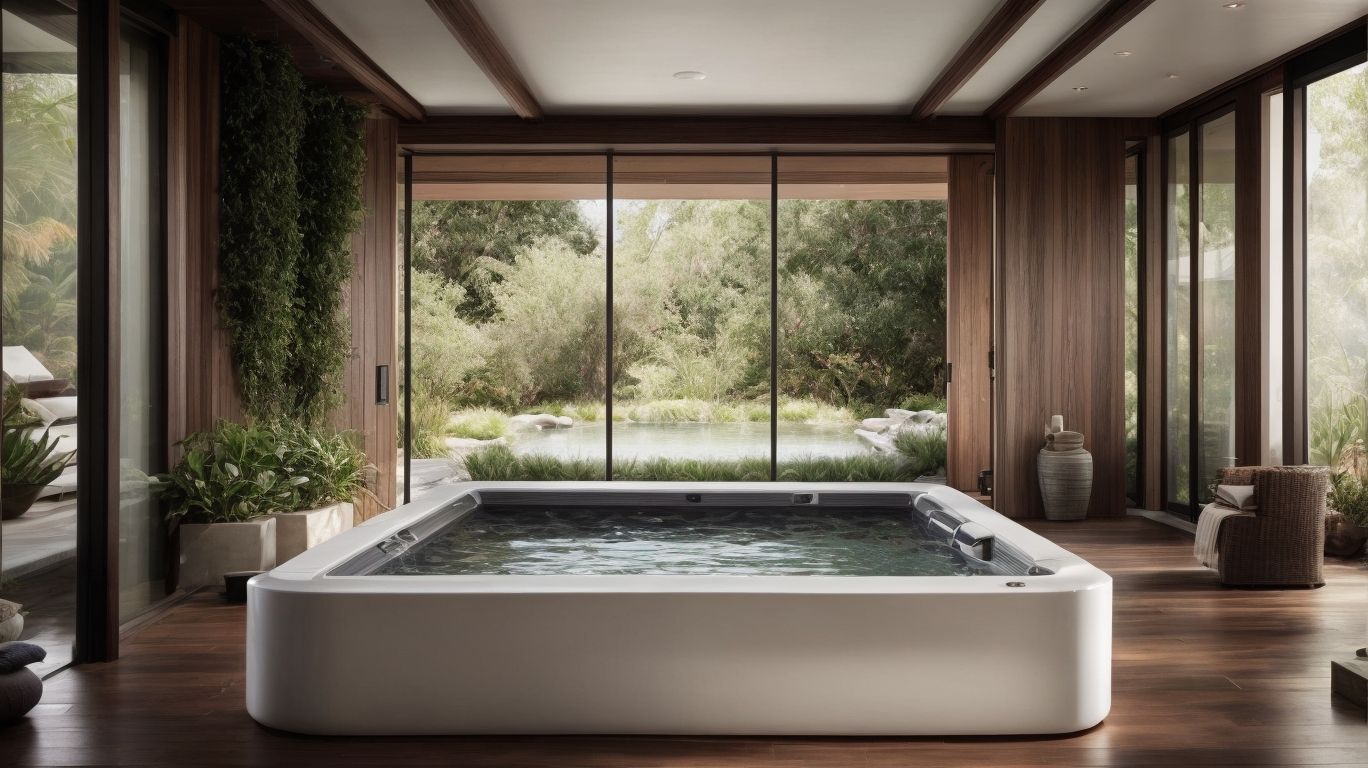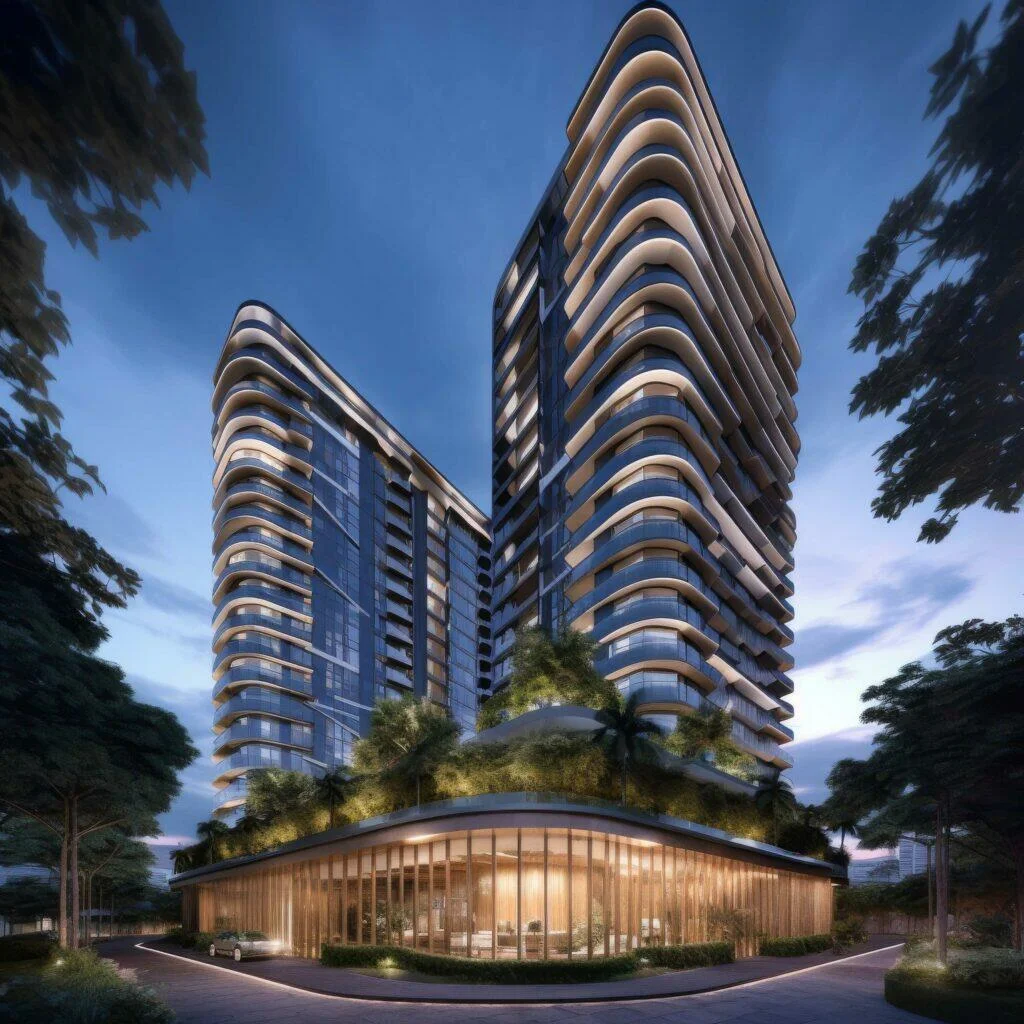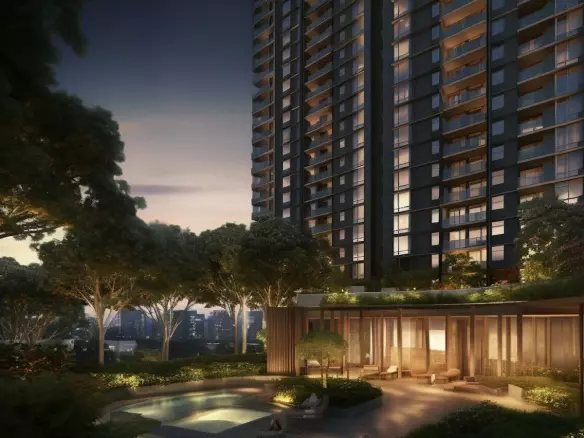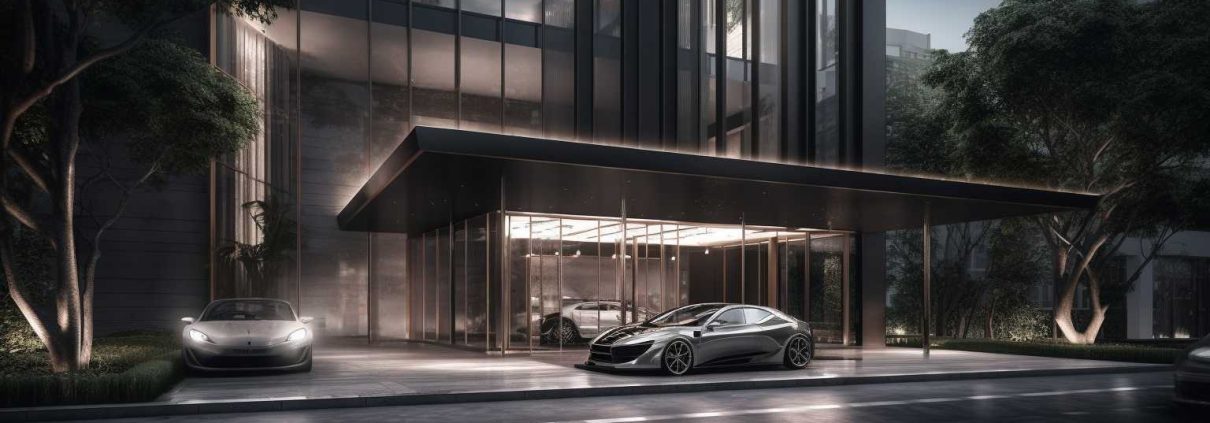
Are you looking for ways to create a healthy and luxurious living space? Look no further. In today’s fast-paced world, it has become increasingly important to prioritize our health and well-being. This article discusses the importance of integrating health and luxury in home design, offering practical tips and ideas that will leave you feeling rejuvenated.
What Is Health and Luxury in Home Design?
When it comes to home design, health and luxury go hand in hand. This means creating spaces that not only exude comfort and high-end elements, but also promote physical and mental well-being. Achieving this involves incorporating natural light, indoor plants, ergonomic furniture, and sustainable materials. By prioritizing health and luxury in design, one can significantly improve their overall quality of life and create a tranquil and rejuvenating environment.
For instance, a perfect example of this concept would be a homeowner who transformed their bedroom into a personal spa-like retreat, complete with a meditation corner, a luxurious bathtub, and a skylight that allowed an abundance of natural light into the room.
Why Is It Important to Integrate Health and Luxury in Home Design?
Integrating health and luxury in home design is crucial for several reasons. First and foremost, it promotes overall well-being by creating a nurturing space for physical and mental health. Additionally, it enhances the living experience, making daily activities more enjoyable and rejuvenating. Furthermore, it adds value to the property, as health-conscious features are highly desirable in the real estate market. Lastly, it sets a positive example for future generations, encouraging them to prioritize their health and well-being.
Pro-tip: To seamlessly blend health and luxury in your home design, incorporate natural materials, ample natural light, and functional fitness areas.
What Are the Benefits of Having a Healthy and Luxurious Home?
When designing a home, there is often a trade-off between prioritizing health and wellness, or indulging in luxury and extravagance. However, what if you could have the best of both worlds? In this section, we will discuss the numerous benefits of integrating health and luxury in home design. From promoting physical and mental well-being to increasing property value and enhancing overall quality of life, there are many advantages to incorporating elements of both in your living space. Let’s dive into the specifics of how a healthy and luxurious home can positively impact your life.
1. Promotes Physical and Mental Well-being
Promoting physical and mental well-being through home design is essential for creating a luxurious and healthy living environment. Here are some steps to incorporate this aspect into your home design:
- Maximize Natural Light: Allow ample sunlight into your space by using large windows and skylights.
- Provide Adequate Ventilation: Ensure proper airflow to eliminate pollutants and improve indoor air quality.
- Create Relaxation Areas: Designate spaces for meditation, yoga, or reading to promote mental well-being.
- Use Calming Colors: Opt for soothing colors like blues and greens that have a calming effect on the mind.
- Integrate Nature: Bring the outdoors inside with plants and greenery, which can improve mood and air quality.
- Consider Acoustic Design: Incorporate materials that absorb noise to create a peaceful and serene atmosphere.
Pro-tip: Incorporating elements of nature, light, and relaxation areas in your home design can greatly impact your overall well-being.
2. Increases Property Value
Increasing property value is a key benefit of incorporating health and luxury features into home design. Here are some steps to achieve this:
- Invest in energy-efficient upgrades, such as solar panels or energy-saving appliances, to increase property value.
- Upgrade the kitchen and bathrooms with high-quality materials and fixtures for added value.
- Create functional outdoor living spaces, like a patio or deck, to enhance the overall value of the property.
- Add smart home technology for convenience and efficiency, which can also boost property value.
- Improve curb appeal with landscaping and exterior upgrades to attract potential buyers and increase property value.
Pro-tip: Consider consulting a real estate professional to identify the most impactful upgrades for your specific market and increase property value.
3. Enhances Quality of Life
A healthy and luxurious home not only provides a comfortable living space but also enhances quality of life in several ways:
- Creates a peaceful and relaxing environment to unwind and de-stress.
- Improves indoor air quality, reducing the risk of respiratory issues.
- Enhances quality of life by promoting better sleep and overall well-being.
- Provides ample space for hobbies, exercise, and personal development.
How Can Health and Luxury Be Incorporated in Home Design?
When it comes to home design, the common perception is that health and luxury are two separate entities. However, the truth is that these two aspects can be seamlessly integrated to create a space that promotes both physical and mental well-being while also exuding a sense of indulgence and comfort. In this section, we will explore how natural lighting and ventilation, sustainable and non-toxic materials, incorporation of nature, and smart home technology can all be incorporated in home design for a healthier and more luxurious living experience.
1. Natural Lighting and Ventilation
Natural lighting and ventilation are essential for creating a healthy and luxurious home atmosphere. To successfully incorporate these elements, follow these steps:
- Maximize the use of windows and skylights to allow plenty of natural light into the space.
- Utilize light-colored and reflective surfaces to enhance the distribution of natural light.
- Install window treatments that can easily adjust light levels and provide privacy.
- Strategically position windows to promote cross-ventilation and fresh air circulation.
- Add ceiling fans or implement natural ventilation strategies such as operable windows or louvers.
- Incorporate greenery and indoor plants to improve air quality and create a connection with nature.
By following these measures, you can create a home that is not only visually appealing but also promotes the well-being and comfort of its occupants.
2. Use of Sustainable and Non-toxic Materials
Using sustainable and non-toxic materials in home design is crucial for creating a luxurious and healthy living space. Here are some steps to incorporate these materials:
- Choose eco-friendly flooring options such as bamboo, cork, or reclaimed wood.
- Opt for low VOC (volatile organic compound) paints and finishes to minimize indoor air pollution.
- Use natural insulation materials like wool or cellulose to enhance energy efficiency and indoor air quality.
- Select furniture made from sustainable materials like reclaimed wood or recycled plastic.
- Opt for non-toxic cleaning products and avoid materials that release harmful chemicals into the air, such as formaldehyde-laden plywood or particleboard.
3. Incorporation of Nature and Greenery
Incorporating nature and greenery into home design can create a healthy and luxurious living environment. Here are some steps to achieve this:
- Choose large windows or skylights to allow ample natural light into your home.
- Add indoor plants to improve air quality and create a calming atmosphere.
- Create a green wall or vertical garden to bring the beauty of nature indoors.
- Incorporate natural materials like wood and stone in your design.
When John renovated his home, he followed these steps and incorporated nature and greenery by installing a living wall in his living room. The wall not only added a touch of luxury, but it also improved air quality and created a refreshing ambiance. John loved how the greenery brought the beauty of nature indoors, making his home feel like a peaceful oasis.
4. Smart Home Technology for Convenience and Efficiency
To incorporate smart home technology for convenience and efficiency, follow these steps:
- Start with a central hub: Install a smart home hub that serves as the control center for all of your devices.
- Choose compatible devices: Select smart devices that are compatible with your hub, such as smart thermostats, lighting systems, and security cameras.
- Create automation: Set up automation routines to streamline your daily tasks, such as automatically adjusting the temperature when you leave or turning off lights when you’re not in a room.
- Enhance security: Install smart locks and video doorbells for added security and peace of mind.
- Integrate voice control: Connect your smart home system to a voice assistant like Amazon Alexa or Google Assistant for hands-free control.
Pro-tip: Consider energy-saving features like smart thermostats and LED lighting to reduce energy consumption and lower utility bills.
What Are Some Examples of Homes That Successfully Integrate Health and Luxury?
As the concept of wellness becomes increasingly important in our lives, the integration of health and luxury in home design has become a sought-after feature. In this section, we will explore some examples of homes that have successfully combined these two elements. From eco-friendly and energy-efficient homes that promote a healthy lifestyle and a sustainable environment, to luxurious homes with state-of-the-art spas and gyms, and even high-tech homes equipped with advanced air and water filtration systems – we will discover the various ways in which health and luxury can be seamlessly integrated into home design.
1. Eco-Friendly and Energy-Efficient Homes
- Choose energy-efficient appliances and fixtures to reduce energy consumption.
- Install solar panels to generate renewable energy and reduce reliance on the grid.
- Use energy-efficient windows and insulation to improve thermal performance.
- Incorporate passive design strategies like proper orientation and shading to optimize natural lighting and reduce the need for artificial lighting.
- Implement smart home technology to monitor and control energy usage.
Creating an Eco-Friendly and Energy-Efficient Home doesn’t have to break the bank. Consider these suggestions:
- Research and take advantage of government incentives and rebates for energy-efficient upgrades.
- Opt for second-hand or refurbished appliances and materials.
- Focus on essential energy-saving features and gradually add more eco-friendly elements over time.
- Consider DIY projects and upcycling to repurpose materials and reduce waste.
2. Wellness-Focused Homes with Spas and Gyms
Wellness-focused homes that include spas and gyms provide a higher level of luxury and promote overall well-being. These homes have designated areas for relaxation and exercise, allowing residents to prioritize their health and fitness goals. Spas offer a variety of amenities such as saunas, steam rooms, and hot tubs, promoting relaxation and stress relief. Gyms are equipped with state-of-the-art exercise equipment, providing convenience and motivation for workouts. Having these wellness-focused features in a home can improve physical fitness, mental well-being, and overall quality of life for residents.
3. High-Tech Homes with Advanced Air and Water Filtration Systems
High-tech homes with advanced air and water filtration systems offer numerous benefits for occupants. Here are steps to incorporate these systems into home design:
- Research: Learn about the latest high-tech air and water filtration systems available in the market.
- Consultation: Seek guidance from experts to determine the specific needs of your home and the appropriate filtration systems to install.
- System Installation: Hire a professional to install the chosen air and water filtration systems, ensuring they meet safety and efficiency standards.
- Regular Maintenance: Follow manufacturer guidelines for maintenance and servicing of the filtration systems to ensure optimal performance.
- Monitoring: Regularly monitor air and water quality to ensure that the filtration systems are effectively removing pollutants.
By incorporating high-tech air and water filtration systems, homeowners can enjoy improved indoor air quality and access to clean, purified water for a healthier and more luxurious living environment.
How Can One Achieve a Healthy and Luxurious Home on a Budget?
Creating a healthy and luxurious home doesn’t have to break the bank. By carefully planning and making smart choices, you can achieve a home that promotes wellness and indulgence without draining your wallet. In this section, we will discuss practical tips and strategies for designing a home that prioritizes both health and luxury while staying within a budget. From prioritizing essential features to taking advantage of tax incentives, we’ll cover various ways to achieve your dream home without breaking the bank.
1. Prioritize Essential Features
When striving to create a healthy and luxurious home, it is crucial to prioritize essential features that contribute to overall well-being and comfort. Here are some steps to consider:
- Begin with a clean and clutter-free space to promote a sense of calm and relaxation.
- Incorporate plentiful natural light and ventilation for a fresh and invigorating atmosphere.
- Invest in high-quality bedding and comfortable furniture for optimal rest and relaxation.
- Create a functional and well-equipped kitchen, as it serves as the heart of the home.
- Ensure proper insulation and soundproofing for a peaceful and tranquil environment.
By prioritizing these essential features, you can create a healthy and luxurious home that enhances your overall well-being and quality of life.
2. DIY Projects and Upcycling
DIY projects and upcycling are great ways to incorporate health and luxury into home design without spending a lot of money. Here are some easy steps to follow:
- Identify areas for improvement: Take a look at your home and identify areas that could benefit from DIY projects and upcycling.
- Repurpose and reuse: Look for materials, furniture, or decor items that can be repurposed or upcycled to add unique and stylish elements to your home.
- DIY furniture and accessories: Create your own furniture pieces or accessories using affordable materials and simple tools. This allows you to personalize them to fit your design aesthetic.
- Improve indoor air quality: Use eco-friendly paints and finishes when repainting walls or furniture to minimize the release of harmful chemicals into the air.
By utilizing DIY projects and upcycling, you can easily transform your home into a healthy and luxurious space.
3. Utilize Affordable Sustainable Materials
When aiming to achieve a healthy and luxurious home on a budget, it is important to incorporate affordable sustainable materials. Here are some steps to consider:
- Research: Look for materials that are both eco-friendly and cost-effective.
- Recycled materials: Opt for reclaimed wood, recycled glass, or salvaged materials for both construction and decoration.
- Natural fibers: Choose textiles made from sustainable materials such as organic cotton, hemp, or bamboo.
- Biodegradable finishes: Use low-VOC paints and finishes that are non-toxic and environmentally friendly.
- Energy-efficient options: Install energy-efficient appliances and lighting fixtures to reduce utility costs.
By incorporating these steps, you can create a healthy and luxurious home while being mindful of your budget and the environment.
4. Take Advantage of Tax Incentives for Green Homes
Taking advantage of tax incentives for green homes can help make your healthy and luxurious home more affordable. Here are some steps to consider:
- Research: Find out what tax incentives are available for green home improvements in your area.
- Eligibility: Ensure that your home improvement project meets the requirements for the tax incentives.
- Documentation: Keep all receipts, invoices, and other relevant documents to prove your eligibility for the incentives.
- Consultation: Seek advice from a tax professional to understand the specific tax benefits you can receive and how to properly claim them.
Jane was determined to incorporate eco-friendly features into her home, but was worried about the cost. However, she discovered that her state offers tax incentives for green homes, and decided to install solar panels. Not only did this reduce her carbon footprint, but she also received a generous tax credit that made the project more financially feasible. Thanks to these tax incentives, Jane was able to achieve a healthy and luxurious home within her budget.






